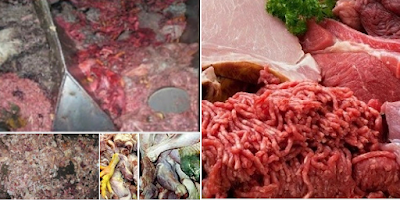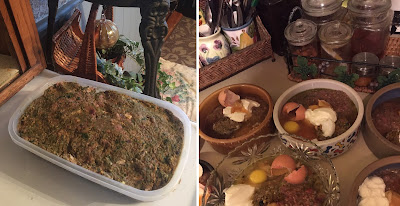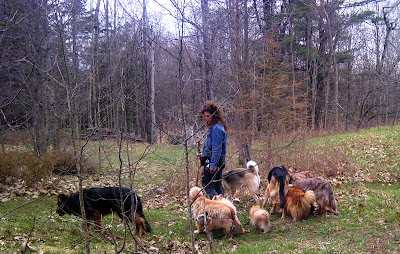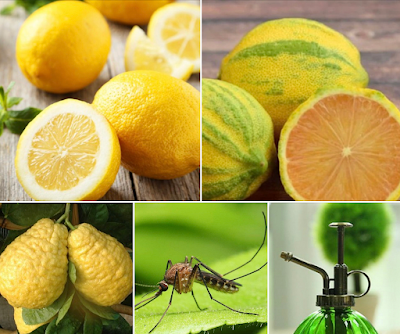Does Your Dog and Cat's Food or Treats Contain Health Destroying Condemned, Denatured, Rendered Meat, Organs, Bones, Fat and By-products?
★ 10 min read
4.0 Which Animals Fall Under The Condemned (D4 Animal) Classification?
6.0 Denatured and Rendered
Article and graphics by Karen Rosenfeld
In this article:
- Check your Pet Food and Treat Ingredient List
- Pet Food that Can Contain Condemned, Rendered, Denatured Meat, Organs, Bone, Fat and By-Products
- Who Regulates Meat and Poultry Classifications?
- Which Animals Fall Under The Condemned (D4) Classification?
- Condemned Meat, Organs, Bone, Fat and By-Products
- Denatured and Rendered
- Denaturizing Agents
- How The Industry Restores 'Normal' Color and Smell to Denatured Meat
- Examples of Pet Food That do NOT use Human Food Grade Meat
As per the USDA, CFIA and FSA regulations, D4 (dead, diseased, dying, disabled) animals are designated as condemned and must be denatured to ensure the condemned carcass (meat, organs, bones, fat, etc.) never enter the human food chain. However, the USDA does allow use of condemned denatured animals (D4) as a pet food ingredient.
The
Pet Food industry does NOT want you to know about this health devastating, toxic
ingredient.
Sadly a wide range of products on your local pet food store shelves contain rendered and condemned denatured muscle meat, organs, bones and fat. This toxic pet food component is also a common component of prescription pet food diets. Unfortunately there are also a small number of raw food suppliers that sell condemned denatured raw food.
In this article you'll learn about these toxic ingredients and how to avoid purchasing products that contain condemned, denatured ingredients.
In this article you'll learn about these toxic ingredients and how to avoid purchasing products that contain condemned, denatured ingredients.
1.0 Check Your Pet Food Product Labels
Check your dog and cat's pet food and treat product labels:
- Dry food (kibble, bisquits) and treats.
- Canned food.
- Wet food.
- Freeze dried, air dried, dehydrated food and treats.
- Premade cooked food diets.
- Raw food.
A quick check of your pet food label will reveal if
your dog or cat’s food contains rendered or D4, condemned, denatured meat, organs, bone or fat. Don’t bother looking
for 'D4', 'rendered', ‘condemned’, ‘denatured’, ‘denaturized’ on the label – you won’t see those
words used.
The Canadian Food Inspection Agency (CFIA), United States
Department of Agriculture Food Services Inspection Agency (USDA FSIS), the UK's Food Standards Agency (FSA) and
non-governmental organizations such as AAFCO do NOT
require pet food manufacturers to reveal this information on pet food labels.
The meat, organs, bone and fat
*may NOT be condemned, or denatured if the label specifies:
- Meat is 100% 'editable'.
- Meat is 100% human food grade, or;
- All ingredients are 100% human food grade.
- Unfortunately, the words 'human food grade', or 'human grade' are NOT a guarantee of quality. Neither term is legally binding. The FDA uses the term 'edible' to define '"safe for human consumption".
*In August of 2015, the US Food and Drug
Administration (FDA) announced that it would no longer offer, and provide
review of pet food manufacturer documentation for the purpose of substantiating
‘human-food-grade’ claims on pet food (and treat) labels. AAFCO is gearing-up
to devise their own regulations to define ‘human-food-grade’ ingredients in pet
food. This, however is not reassuring, as AAFCO is an organization made up of
representatives of the pet food industry. AAFCO is a
self-regulating, and self-interested organization.
All, or
some of the meat IS likely to be condemned and denatured if the label does NOT specify:
- 100% human food grade meat, or;
- 100% human food grade ingredients.
If, after checking the label you have identified
the presence of denatured meat – I recommend you change your dogs and cats
diet.
2.0 Pet Food that Can Contain Condemned, Rendered, Denatured Meat, Organs, Bone, Fat and By-products
Rendered and condemned,
denatured meat, organs, bone and fat are used in a wide range of commercial pet food products,
including:
- Dry Highly Processed Pet Food (kibble), and treats
- Dry processed Pet Food, and treats (‘minimally’ processed patties and other formulations)
- Canned Pet Food (‘wet’ pet food)
- Dehydrated Pet Food, and treats
- Freeze Dried Raw Pet Food, and treats
- Raw Pet Food – grinds, patties, chunks, muscle meat, organs, bone, etc.
Pet food made in Canada and the USA, containing
condemned and denatured meat is sold all over Canada and the USA – it is also
exported all over the world. For example Hill’s, Purina’s and Royal Canin’s dry
processed food, canned food and treats – pet store and veterinarian
prescription product lines.
3.0 Who Regulates Meat and Poultry Classifications?
In North America the Canadian Food Inspection Agency (CFIA), the
United States Department of Agriculture (USDA) Food Safety and Inspection
Agency (FSIS) are responsible for regulating and inspecting all animals
(‘livestock’) for slaughter and processing by registered slaughter
establishments and rendering plants. In the UK the Food Inspection Agency (FIA) regulates and inspects animals for slaughter.
4.0 Which Animals Fall Under The Condemned (D4 Animal) Classification?
Prior to slaughter, CFIA and FSIS Inspectors -
inspect, mark, stamp or tag all live animals – ante-mortem inspection. Animal
carcasses are re-inspected after slaughter (post-mortem inspection).
Animals are considered unfit for human consumption – ‘inedible’, and
therefore ‘condemned’ (D4) under the following circumstances:
- 'Downers' - an industry term for animals that cannot stand on their own.
- Live animals found to be affected by disease or an abnormal condition.
- Animals that died en-route to the registered slaughter establishment.
- Animals that died in the yard, or livestock holding pen of the registered slaughter establishment.
- Dead dogs and dead cats - you can read about that here.
- Dead zoo animals.
- Roadkill.
5.0 Condemned Meat, Organs, Bone, Fat and By-products
Condemned
includes:
- Entire carcasses.
- Portions of carcasses which upon inspection (or re-inspection) are found to be affected by disease or an abnormal condition, or contaminated by feces – all of which renders them “unfit for human consumption”
- Butcher shop floor trimmings, and meat past its best before date.
- Grocery store meat that is past its best before date.
- Carcasses and parts that are condemned as ‘Specific Risk Material’ (SRM) can be used as salvaged meat for pet food (animal feed products) once the portions of the animal that are SRM are removed. If removal of the SRM is not possible the carcass or effected portions of, are considered inedible and are to be disposed.
Feathers, hides and hair are generally considered
inedible however feathers and hide are used in the pet food industry. The hide
is used to make rawhide. Feathers are used by some pet food manufacturers as
‘highly edible’ and a ‘good source of nutrition’ – which feathers clearly are
not. Royal Canin uses feathers in some of their high-end prescription dog and cat food products.
Condemned products (meat, organs, blood, etc.) may
be mixed with non-SRM, and non-condemned salvaged for animal feed products.
Once the CFIA or FSIS inspector condemns a carcass
or body-part, it must be clearly marked ‘CONDEMNED’ and is handled in a part of
the facility separate from non-condemned meat. Segregation of condemned meat
vs. fit for human consumption meat is highly regulated - even air flow patterns
are regulated to prevent air in rooms containing inedible meat from mixing with
the air in edible meat processing spaces. Shipping containers used to transport
the condemned meat must be marked as containing condemned meat. This should
indicate to you, the consumer something about the, diseased, bacteria laden,
etc. state of the condemned meat.
The next step in the processing of condemned meat
is the application of toxic substances to ‘denature’ the meat. Keep in
mind, even if the slaughtered animal was pasture raised-grass fed, or raised
via certified organic husbandry, after the meat is denaturized the meat is
contaminated with toxins and carcinogens making the meat a trigger for cancer
in your dog or cat.
6.0 Denatured and Rendered
Meat, poultry, fat rendering plants, and pet food
manufacturers must comply with the CFIA’s and USDA’s regulations for processing
and handling of condemned meat and poultry. The CFIA and FSIS regulations
state that all condemned meat, and poultry:
- Must be ‘denatured’.
- Denaturing must be accomplished using a denaturing agent.
6.1 Definition and Purpose of Denaturing Meat
According to the CFIA, Denaturing: “means to stain the meat product in accordance
with section 6.21 or 6.22 of the Health of Animals Regulations or to otherwise
treat the meat product to give it an appearance or characteristic such that it
cannot be confused with an edible meat product.”
According to the USFDA, Denaturing: “The basic purpose of
denaturing is to prevent salvage or diversion of violative materials for human
consumption.”
What does
this really mean?
Condemned meat must be made unrecognizable as meat
and poultry for human consumption by altering its smell, color and other
attributes of its physical appearance.
6.2 Condemned Meat Ingredients and Pet Food Industry ‘Marketing’
As noted
in the first part of this article – you won’t find the words ‘condemned’ or
‘denatured’ on any pet food or treat packaging. What you will see is the pet
food industry taking advantage of the loving pet owner. Pet food products that
contain condemned/denatured meat and poultry are advertised as…
- “Fresh meat ingredients”
- “Natural meat ingredients”
- “Quality meat ingredients”
- “Real meat ingredients”
- “100% human food grade meat ingredients”
- Etc.
Why? Because there are no regulations in-place to
stop the pet food manufacturers, pet food retailers, (including veterinarians
that push, and peddle 'prescription diet' foods and treats) from doing
otherwise. The deception is 100% legal.
Are you shocked your veterinarian has not told you
what’s in the prescription pet food he/she is selling you? Surprised your
trusted pet food store staff haven’t told you. The sad truth is that there are
many ‘professionals' - members of the pet industry that know but just don’t
care. Greed takes precedence over truth and ethics.
7.0 Denaturizing Agents
The substances approved by the CFIA and FSIS for
use as denaturizing agents include multiple toxins and carcinogens. After the
condemned meat is 'bathed' the denaturizing agents become a hidden ingredient
in the meat. You will not see denaturizing agents listed on pet food product
labels.
The following is a list of denaturizing substances
approved for use on condemned meat and poultry destined for use in pet food:
- Crankcase oil (used oil)
- Cresylic disinfectant
- Coarsely ground hard bone
- Crude carbolic acid
- Charcoal (fine powder form) – i.e. Liquik®Char
- Dye – specifically black chemical-based dye
- Food coloring
- FD&C blue No. 1
- FD&C blue No. 2
- FD&C green No. 3
- Food colouring mixed formulas immersions (baths) –
- FD&C green + No. 3 coloring + liquid detergent + citronella oil
- FD&C yellow + No. 5 coloring + tannic acid
- Fuel oil (No. 2) brucine (brucine is a very poisonous alkaloid) dissolved in a mixture of alcohol + pine oil or oil of rosemary and finely powdered charcoal
- Kerosene
- Phenolic disinfectant that conforms to commercial standards CS 70-41 or CS 71-41 “which shall be used in at least 2 percent emulsion or solution”.
- Other proprietary (trade secret,non-disclosed) substances developed by the chemical industry for denaturing. These substances are not scrutinized, nor regulated by the USDA. For example 4-D Denaturant™
- Tanic acid bath – Tanic acid + ferric acid + water
- Charcoal
- Fish meal from a registered feed meal – most fish meal is preserved with ethoxyquin, a cancer causing substance that you can read about here.
- Chemical denaturants listed here, and here – these are toxic chemical substances that include carcinogens.
- These include:
- Denaturant Black – black chemical based dye
- DENATURANT G – By Birko. You can see details here.
- RMC Denaturant
- Johnson Meat Denaturant by S.C. Johnson famous for all the carcinogens they use in their products
- The above all contain toxic, cancer causing dyes and other chemicals.
- An agent for which the operator requested a letter of guarantee from the supplier of the agent to demonstrate its acceptability; OR
- Alternate to using an approved denaturing agent, another acceptable method of denaturing is to mix the meat product or carcasses with intestines and intestinal contents in a continuous and non reversible mechanical conveying system which empties directly to a melter or a conveyance acceptable to the inspector in charge for transportation to another registered establishment or an inedible rendering plant for sterilization.
- CFIA’s list allows use of non-scrutinized, unregulated substances.
The above
substances are allergens, toxins, most are known carcinogens – cancer causing
agents.
FD&C
food dyes are known to cause adverse behavioral changes in animals and, in humans. FD&C dyes are known carcinogens and allergens for non-human animals,
and humans. And yes, obviously crude oil
and its derivatives (fuel Oil No.2 – jet fuel motor oil, etc. and kerosene)
should never be ingested by any animal. Chemical based detergents leave toxic
residue, and obviously should never be ingested. Obviously not one of these
substances is an appropriate ingredient (hidden or otherwise) in food for dogs
or cats.
8.0 How The Industry Restores ‘Normal’ Color and Smell to Denatured Meat
The denaturizing substances cannot be washed out
of, nor in any other way removed from the meat. Denaturizing agents are
designed to penetrate all cells – muscle, organ, fat, bone.
Once the denatured meat has been sold and
transported to a pet food manufacturing facility, the manufacturer may choose
to apply additional chemicals to make the smell, and look of the meat appear
normal.
- Toxic, carcinogenic food additives - food flavor, and or food color is used to help disguise denatured meat.
- The intense processing, and high heat cooking required to make dry food and wet foods also helps to destroy color and smell.
- After processing, dry processed food is typically sprayed with rendered fat to make the product more appealing.
Some of these manufacturers advertise their products as:
- ‘holistic’,
- ‘all natural’,
- ‘we only use high quality ingredient’
- ‘100% fresh’
- *‘No food additives’
- *‘No food coloring’
- *‘No preservatives’
- etc.
However, as these terms are not regulated you must define for yourself what you accept as the
definition of terms such as 'Human food grade', ‘all natural’, ‘holistic’, ‘high quality’ etc. – these are all
unregulated terms in the pet food industry. Manufacturers do not have to
define nor justify these terms according to any regulations.
The example brands, product lines and/or manufacturers listed below produce either one of, or multiple of the following types of pet food:
The example brands, product lines and/or manufacturers listed below produce either one of, or multiple of the following types of pet food:
- Dry
- Wet/canned
- Dehydrated
- Freeze dried
- Raw
*Pet food
manufacturers are only obligated to list food, and food additive ingredients
that they put into a food product – they are not legally obligated to list
ingredients that are part of an ingredient i.e. food coloring or motor oil or
other denaturing substances used to denature condemned meat.
- Artemis
- Avoderm
- Blue Buffalo
- Chicken Soup for the Soul
- Golden Eagle Holistic Health
- Go
- Dick Van Patton Natural Balance
- Dog’s Well Nutrisca
- Earthborne Holistic
- Evanger's
- Halo
- Hill’s Prescription Diet
- Hill’s Science Diet
- I and Love You
- Ivory Coat Natural Health
- Kirkland Lake
- Nature’s Recipe
- Nutro
- Now Fresh
- Performatrin Ultra
- Premium Edge
- Pure Pheasants
- Purina
- Purina Veterinary Diets
- Royal Canin
- Royal Canin Veterinary Diet
- Simply Nourish
- Simply Rawsome
- Summit
- Taste of the Wild
- Wellness Core
- Wagging Tales Wellness
- Various suppliers of raw meat, organs, bone and fat to greyhound racing tracks.
The above list represents a few examples of the many pet food companies using condemned denatured meat. One of these companies sells a line of raw products that are denatured and labelled as such. They also sell non-dentaured raw products.
10.0 Tips to Avoid Products Containing Condemned, Denatured Meat
Look for a product that GUARANTEE that ALL ingredients use are human food grade.
- Learn about species appropriate ingredients:
- Go to this article.
- Example of raw or gently cooked food recipe here.
- Go to this article.
- Do NOT purchase meat, organs, bones, fat, etc. from companies that sell to greyhound race tracks.
Unfortunately the more processed a
product is, i.e. dry processed ‘food’ (kibble), canned highly processed food,
raw minces, and dehydrated food products – the easier it is to hide the truth
behind the product ingredients.
The high-rates of inflammatory disease (including cancer) experienced by
today's dogs and cats is not a natural occurrence - it is a man-made disease.
Cancer doesn't just happen.
Holistic Diet, Nutrition, Wellness Services Tailored to Your Individual Dog and Cat
For information about my holistic diet, nutrition, wellness services visit my:
Maintain good health | Address acute and chronic health issues | Pre and post surgery support and recovery
My holistic wellness services are available worldwide via video consultation.
🌎 USA | Canada | UK | Europe | Australia | New Zealand | Asia | South and Central America | Africa | UAE
📱 FaceTime | Facebook | Skype | WhatsApp
Holistic Behavioral Services For Your Dog
For information about my holistic behavioral services visit my:
For dogs of all ages, sizes and breeds
My holistic behavioral services are available locally in-person and worldwide via video session.
🌎 USA | Canada | UK | Europe | Australia | New Zealand | Asia | South and Central America | Africa | UAE
📱 FaceTime | Facebook | Skype | WhatsApp
Affiliations to Companies
✓ None.
✓ I don't sell food or supplements.
✓ I'm not aligned with any companies.
✓ None.
✓ I don't sell food or supplements.
✓ I'm not aligned with any companies.
Article and graphics by Karen Rosenfeld














